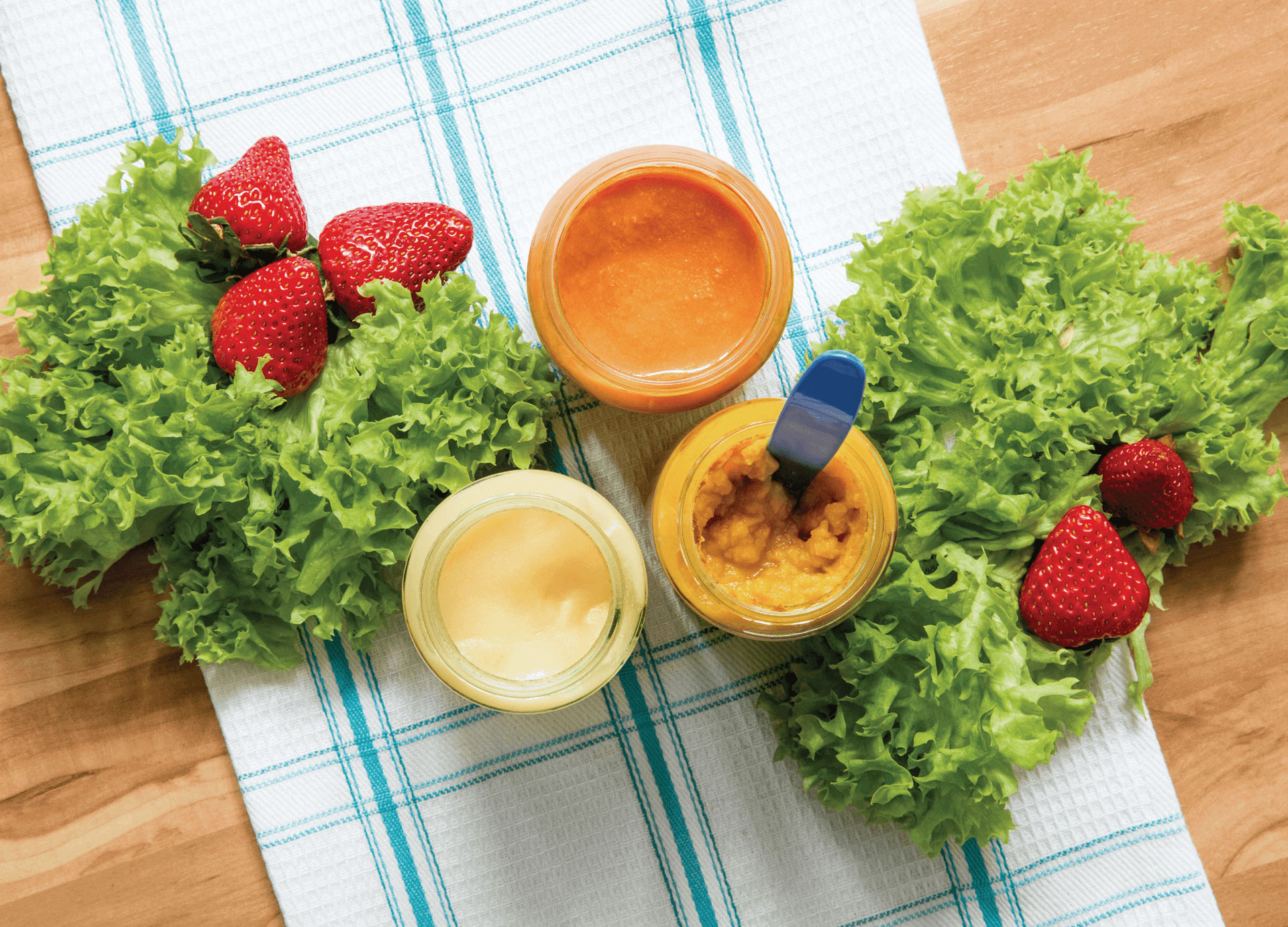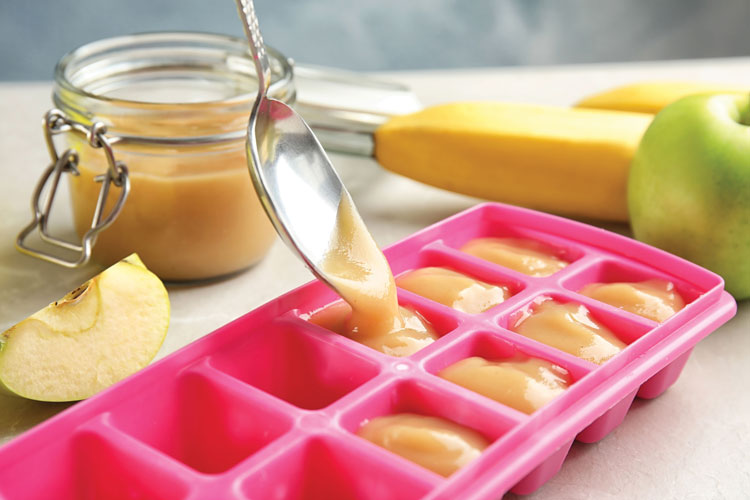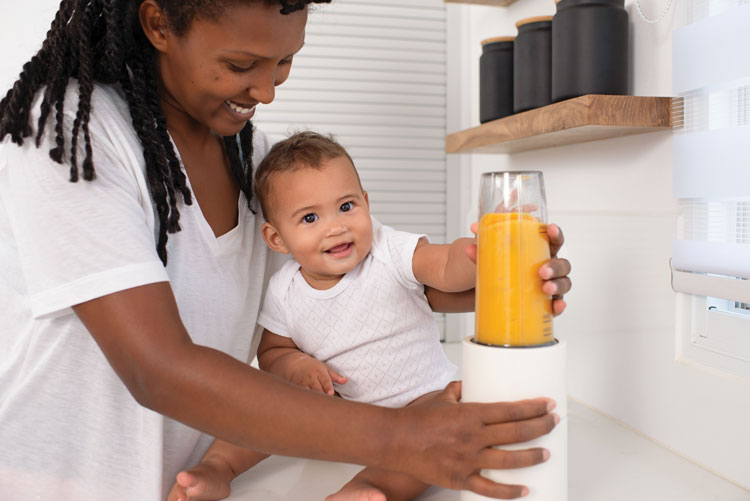


Replace some of the fat or liquid in recipes for muffins, pancakes, or bread with jarred baby food purees.
Add more flavor and thicken sauces and soups by adding in jarred vegetables like sweet potato or butternut squash.
Blend jarred vegetable purees with Greek yogurt, lemon juice, and herbs to create a flavorful salad dressing or dip.
Add jarred fruits to infant cereal or regular oatmeal for added flavor and nutrition.
Use jarred fruits instead of jelly or jam on toast.
Mix with mashed bananas, eggs, and a bit of milk to create a pancake batter.
Add into soups or stews to thicken and for extra nutrients.
Dip chicken or fish into beaten eggs, then coat in jarred baby cereal to use as a breading before baking or frying.
Layer with yogurt and fresh fruits to create a breakfast or dessert parfait.

Add into recipes for meatballs, meatloaf, or pasta sauces for a boost of protein and flavor.
Great for 6 to 8-month-olds!





Recipes adapted from Arizona WIC:
https://www.azdhs.gov/documents/prevention/azwic/agencies/nutrition-education/using-baby-food-in-recipes.pdf
and Minnesota WIC:
https://www.health.state.mn.us/people/wic/recipes/infantfoods.html
Side-Lying Hold
This hold is useful when:
Cross-Cradle Hold
This hold is useful when:
Clutch or “Football” Hold
This hold is useful when:
Cradle Hold
This hold is useful when:
Laid-Back Hold
This hold is useful when: